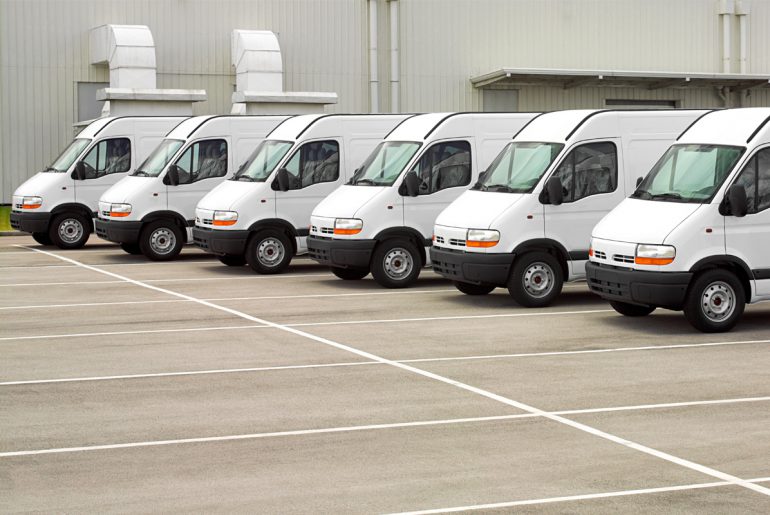As any business owner knows, it can be extremely easy to get stuck in a routine. However, the dangerous cycle of “this is how it’s always been done” can be detrimental to company revenue and customer satisfaction. If your company is still using pen and paper to plan routes you are wading into risky territory.
Depending on the complexity of your routes, geography, road network, and customer requests — manually route planning can become a daunting task. Not only is it inefficient and time consuming, it puts you at risk of failing to meet customer expectations.
Read on as we explore how route planning software will make your day easier, while increasing customer satisfaction and providing instant ROI.
1. Manage Your Day Proactively
After your vehicles depart you may think the day is out of your control and you cross your fingers hoping it all pans out according to the plan. Obviously, you can’t predict accidents or breakdowns, but you can build a solid plan for the day and confirm live ETAs (estimated time of arrival) with gps tracking enabled. This will provide you with up-to-the-minute visibility on driver arrival times.
With real-time updates, you can provide a courtesy call if you anticipate late arrival or ask to reschedule. Your customers will appreciate the advance notice.
2. Win More Business
As customer expectations continue to rise it may seem impossible to commit to delivery windows and keep up with on-demand orders. Automation tools like routing software allow you to stay competitive and generate more sales.
With 85% of consumers wanting express shipping options, this presents an opportunity for you to differentiate your business offerings. It’s possible with a cloud-based solution supporting you in the background. You can easily fit in orders until you’re ready to load your vehicles and dispatch updates in real-time.

3. Plan Around Requests
Make and keep commitments – easily. Then assign the orders to the most efficient resource in the click of a button. You’ll find yourself saying “yes, we can do that!” more often and can minimize frustration for your team and customers at the same time.
4. Keep Your Customers Happy
76% of consumers today will switch to a competitor if you provide a poor home delivery experience. Are you keeping an eye on how your team is performing?

5. Get There On Time
Build efficient route plans that take into account the following details:
-
-
-
- Hour of day (morning and afternoon rush hour)
- Day of the week (Tuesday vs. Sunday?)
- Time of year (holidays or busy season)
- Traffic patterns
- Road closures (road work, shutdowns)
- Vehicle speed (heavy truck vs. motorcycle)
-
-
6. Accurately Confirm Delivery/Service
Transparency on driver location, order status, as well as arrival/departure times is important information to provide to your CSRs (customer service representatives). This allows them to confidently respond to requests and builds your brand’s trust.
7. Plan (Every Vehicle) Efficiently
When planning for multiple vehicles, it’s important to take into account all available resources and constraints. If you’re only planning for one vehicle at a time, this is referred to as “sequencing” and not true route planning.
Smart route planning software inherently builds your routes based on your entire fleet, creating an optimized plan. What’s better than knowing you’re running at maximum efficiency?
8. Instantly Locate Your Drivers
Do you know where your drivers are once they dispatch for the day? Easily confirm location, collect status updates, and know exactly where your vehicles are with a combined GPS tracking and route planning tool.
-
-
- Record arrival and departure times
- Confirm vehicle location 24/7
- Compare the “planned” vs. “actual”
- Collect proof of delivery
-
9. Be More Strategic
Are you reviewing your fleet’s performance to make future improvements? With routing software and GPS tracking you can analyze KPIs, set benchmarks, and hold your team more accountable.
10. Turn Any Team Member into a Logistics Pro
With the click of a button you can turn any team member into a logistics pro and increase your operational efficiency by 30%. This also gives you peace of mind if your route planner is out of the office and someone needs to fill in!
11. Get Started Fast
Most cloud-based solutions are easy to get started with and require little to no implementation. This means you don’t have to involve your IT team.
(Keep in mind, if you’re looking to implement an API, you’ll want to bring in a tech-savvy person. Open APIs with strong documentation will make it a painless process.)
12. Stay Organized
Managing a small or large team can quickly become overwhelming. Whether you need to block off roads, plan for vehicle maintenance days, or remember vacation requests…details can slip through the cracks. Using a cloud-based solution allows you to quickly make adjustments for future dates – so you’re never caught off guard and can stay organized.
13. Impact Your Bottom Line
Expect to see instant ROI when you use a smarter routing technology. You’ll reduce mileage, unapproved idle time, fuel consumption…and to top if off you’ll save time planning. It’s an easy decision when you can increase efficiency by 30% from day one.
14. Give Your Drivers Access to Info
With a mobile app you can keep your drivers organized and easily dispatch order information. Include details like name and phone number, so drivers can greet the customer by name or call them if needed.
Go above and beyond and add in notes with details, like: previous order details, high priority, or instruct where to leave a package.
15. Support Your Business Growth
Whether growth means adding more orders to the day, expanding to a new location, or hiring a new driver – it’s all possible. Focus on delivering results, driving revenue, and building customer loyalty – and let route planning software focus on solving the logistics challenges.
16. Make Pick-ups/Returns Doable
What does that mean for you? No more wasted space, no more wasted windshield time.
18. Establish Your Business as a Same-Day Champion
“I’ve been able to dramatically increase efficiency in our daily delivery routes and our drivers love having everything pushed to their phones. I can’t speak highly enough about it…and my boss is happy. We easily saved what it costs per month within the first couple of days of using WorkWave Route Manager.”
— Sarah Samuels, Operations Manager, Small Lot Wine
19. Refine Your Processes
Visualize your route plans, review execution details, and fine-tune your settings. Use the data to avoid certain areas during rush hour or discover a driver tends to be a bit slower – then automatically build those details into future plans.
20. Always Improve
Optimization algorithms continuously improve – they work behind the scenes to solve your logistics challenges and present you with the best possible results.
21. Give Your Employees Tools to Do Their Job Better
Depending on the type of business you run, route plans can affect various departments. Provide your team with the resources and to do their job.
Customer Service: Settle disputes and confirm driver location 24/7.
Sales: Extend service offerings and fit in last minute requests.
Route Planner: Save time planning and reduce chance of human-error.
Drivers: Reduce calls to/from the office and stay focused on customers.
Operations: Get a quick snapshot on KPIs and gain real-time visibility.
Owner: Impact your bottom line and increase efficiency.
22. Outdo the Competition
Make free delivery, next day, same day happen. When you extend your service offerings, you stand out and go above and beyond customer expectations.
23. Extend the Lifetime of Your Vehicles
Last mile deliveries (or final mile) is not only expensive – but it puts the most wear and tear on your vehicles. By optimizing your route plans, not only can you reduce your carbon footprint by running eco-friendly routes – but you can better maintain your vehicles and extend their lifetime.
The average Route Manager customer can reduce mileage by 25%, quickly helping you see the value in a route planning tool.
24. Hold Your Employees Accountable
If you find yourself wondering “where are my drivers?” or want quick status updates throughout the day, you can use route planning and tracking tools to gain a birds-eye view.
With GPS tracking and a mobile app in place, you can locate vehicles 24/7, collect proof of delivery, and record arrival/departure times. Not to mention, with reporting metrics you can dig into granular details like unapproved idling, deviations from the plan, and other important indicators that signal something is wrong.
The result? You’ll immediately improve accountability with tracking that verifies and monitors your team’s performance.
25. Reduce the Time it Takes to Plan Your Routes
In addition to increasing efficiency, you’ll simplify your day. You build the foundation (traffic, driver availability, etc.), upload your orders via Excel/.CSV or API integration, review, approve, and dispatch directly to your driver’s mobile phone. No more rushing to plan, no more guesswork – just an optimized plan from day one.




